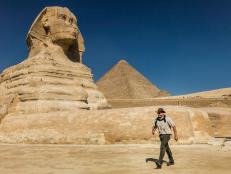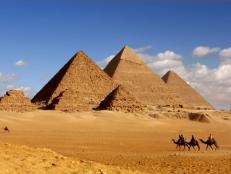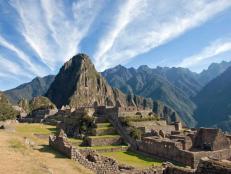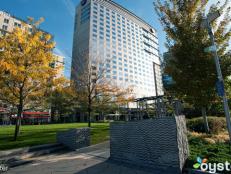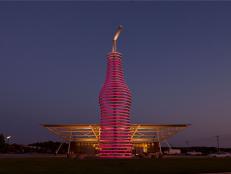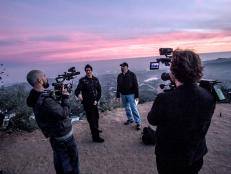An Egypt Education

At the beginning of the year I pitched a story to my editor about the challenges of touring independently in Egypt as a family with two small children, ages 6 and 9. My aim was to share stories from our 2009 adventure in which constant haggling, hassle and headache often led to periods of extreme awesomeness.
Our Egypt experience included acts of entrenched corruption by police, museum guards, airport workers, among others, and some uncomfortable experiences with the locals. After the recent grassroots revolution that engulfed Egypt, I worried that being honest about how I felt at the time might appear, well, kind of jerky. My editor asked me, “In the end, was the hassle worth it?” I didn’t hesitate with my answer, “Yes, yes, a thousand million times, yes.”
It’s unclear what Egypt will be like for tourists post-revolution. Travelers deserted the country as the protests began in January, and most of the major archaeological sites were shut down. The Great Pyramids reopened February 9, but only handfuls of visitors a day have ventured to Giza since. The Cairo Museum, at the center of the revolution in Tahrir Square, has been assessing damage and losses after it was looted during the protests. Tourism is Egypt’s second-largest revenue source, and as many as 2 million Egyptians work in the business. Estimates put tourism industry losses at up to $1 billion a month.
But It’s a Dry Heat
Our story begins in Luxor, the center of Ancient Egypt’s New Kingdom and home to some of the most important archaeological sites in the country -- Temple Karnak, the Valley of the Kings, the Temple of Hatshepsut and Luxor Temple.
The monuments here were built at the height of the Egyptian civilization, between 1800 and 1200 BC. It’s hard to wrap your mind around how old the monuments are. The tombs and temples have survived partly because of the climate, but also because they were constructed to last forever. Standing at the top of Hatshepsut’s Temple, overlooking the Nile, I marvel at how successful they the ancient Egyptians were.
But the heat, oh my god, the heat. It can be oppressive. Just walking out the front door of our hotel, The Winter Palace, was exhausting. The 115-plus degree July sun dealt us a body blow, blinded our eyes, scrambled our brains and sucked moisture from our skin.
We soon discovered another uncomfortable element about our trip. Waiting at the bottom of the hotel’s stone staircase day and night, was a gauntlet of cab drivers, trinket vendors and “tour guides.” It’s impossible to walk down the street without dragging a trail of hawkers, each offering a “better price” for a service or item we had no use for. We were obviously relatively wealthy foreigners and might as well be wearing giant, blinking targets with dollar signs on our backs.
Everything in Egypt appeared to be negotiable, including tour packages, cab fares and restaurant prices. The culture of “baksheesh,” in which people go out of their way to do useless things and then expect tips, is endemic. At the airport men (it’s always men) stand near the entrance and literally grab the bags out of your hands only to drag them a couple of feet to the door, then put out a hand for a tip.
Even the supposedly reputable tour company my husband, David, hired claimed we bought fewer hours and different days than originally planned for our tours in Luxor. When David confronted a representative with documentation of our purchases, the man waved his hand and said “as you like,” as if he’s doing us a favor by being so accommodating. And then for honoring the deal he required a tip, which we paid.
A Special View
It was a relief to arrive in Cairo where the temperature topped out at a balmy 90ish degrees. We headed out to Giza to visit the pyramids believing our experience in Luxor had sharpened our bargaining skills and that we could keep a lid on the baksheesh and upselling. We could not.
David had promised the girls a horse ride from the ticket area up to the pyramids, so we headed for the horse handlers. He negotiated and believed we had settled on a price of $30, but after the girls were being led away on their horses, we learned from someone at the boarding area that they added a “special” photo op for the “low” price of $10. The more we protested, the closer we came to that dreaded $10 island of sand and tourist sorrow.
Finally, David demanded we return to the boarding area. “I have 2 small children, too, sir,” the handler told us. I could see David’s blood pressure throbbing in his temple. “Smile, sir. Why you look so angry?” the handler said. After more arguing, we trotted off with an agreed price of $40. Did we just pay the same price not to go to the photo stop? Yes, we did.
After leaving the group of guides with a little more baksheesh, we headed toward the Sphinx, the oldest monumental sculpture on the planet. The pyramids, Sphinx and other sites near Cairo are almost 5,000 years old. We noticed a huge difference between these Old Kingdom structures and the New Kingdom in Luxor. The masonry is rougher and less precise. In the Old Kingdom structures, there are few hieroglyphics carved into the stone and there is no evidence of painting. Being in the presence of the last remaining example of the Seven Wonders of the Ancient World was breathtaking. I examined the monument as if it would disappear as soon as I stopped looking.
The Cairo Museum
We decided to dispense with the hiring of guides, horses, camels and baggage carriers for the last few days of our trip. No matter how prepared we felt we were to bargain, we always came away feeling angry, guilty or both.
I was very excited to visit the Cairo Museum – the most extensive Egypt collection in the world. Inside, the first thing we noticed was the heat. There was no air conditioning. The next thing we noticed was the clutter. Stone statues, severed heads and unidentifiable pieces of masonry were shoved willy-nilly in corners. Wooden sarcophagi were stacked one on top of the other to the ceilings. Very few of the artifacts were secured behind glass. Very few of the artifacts were labeled in any language and those that were had dusty handwritten numbers or typewritten cards propped up against them.
The volume of antiquities, mummies and statuary was enormous and very little of the collection was grouped together in any meaningful way. In 2007, the mummy of Queen Hatshepsut, one of Egypt’s most famous pharaohs, was found in the museum’s third floor attic where it had languished, unidentified, for more than 100 years.
And yet, the place was charming. It felt like Egypt — dusty, cluttered, functional and unselfconscious. We were struck more by the state of the museum itself than anything we saw. Reports of looting during the revolution broke my heart because I remembered how vulnerable many of the artifacts were.
Dr. Ragab’s Moronic Village and Carnival of Death
On our final day in Egypt, we headed to Dr. Ragab’s Pharaonic Village, an Ancient Egypt-themed museum/amusement park for kids. The guidebook described it as “cheesy,” But we went anyway because we thought it would be nice for the kids to visit a place geared toward children. The museum portion consisted of a boat ride around a marsh where plaster statues floating in the reeds were supposed to illustrate recorded stories and a few live actors pretended to be ancient Egyptians plowing fields, making pottery and cooking bread in clay ovens.
As soon as we stepped off the boat, we were shuttled repeatedly from the cafe to the gift shop. We discovered that glass blowers can write a name on a bottle! Coppersmiths can inscribe a name on a plate! And artists can draw your likeness on papyrus and bakers will sell you the bread they baked in the “ancient” oven.
The kids spied a Ferris wheel in the distance, so we used that excuse to peel off from the tour. We found a playground, but most of the equipment was too hot to play on. We turned a corner and came face to face with a creepy collection of silent carnival rides. Hanging off a rusted-out tilt-a-whirl-type thing were swings that appeared to be made out of concrete. No one was riding or operating the contraptions. We made a beeline for the exit of Dr. Ragab’s Moronic Village and Carnival of Death.
After 11 days, we had had enough of Egypt. I was ready to go but felt nostalgic for Luxor. I remembered our first day of touring. David had suggested we go to dinner at an open-air North African restaurant recommend by our guidebook. We walked through the noisy, crowded main streets of Luxor to avoid haggling for a cab. Emma and Lily wondered aloud if the barefoot kids darting through traffic and attempting to sell us tissue paper were happy. I didn’t have an answer for them. I hope when they return with their kids, that the answer is yes.
Next Up
Stranded Again
Where to Travel in September
See our picks for where to go in September.


